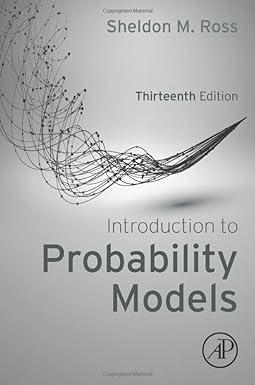A coin having probability p of coming up heads is continually flipped. Say that an event occurs
Question:
A coin having probability p of coming up heads is continually flipped. Say that an event occurs the first time there are k heads in a row. At that point, start over and without using any earlier results, say that the next event occurs the next time there are k consecutive heads, and so on. Thus, for instance, if k = 3 and the results of the first 12 tosses are t, t, h, h, h, h, h, t, t, h, h, h, h, h,h then the first event occurred at time 5, the second at time 12, and the third at time 15.
Let N(n) be the total number of events by time n.
(a) With N(t) = N([t ]), where [t ] is the largest integer less than or equal to t , is {N(t), t ≥ 0} an ordinary renewal process, a delayed renewal process, or neither.
(b) Let Pn = P(event at time n). Find Prk+j, j Hint: Note that here will be an event at time n = rk + j if starting at time n and going backwards the previous k flips were all heads and the preceding one was a tail, or if the previous 2k flips were all heads and the preceding one was a tail, or if, . . . , or if the preceding rk flips were all heads and, if j >0, the preceding one was a tail. (c) Find limn→∞Pn. (d) Use the result from (c) to determine the expected number of flips until there are k consecutive heads. Verify that your answer agrees with that obtained in Example 3.29.
Step by Step Answer:







